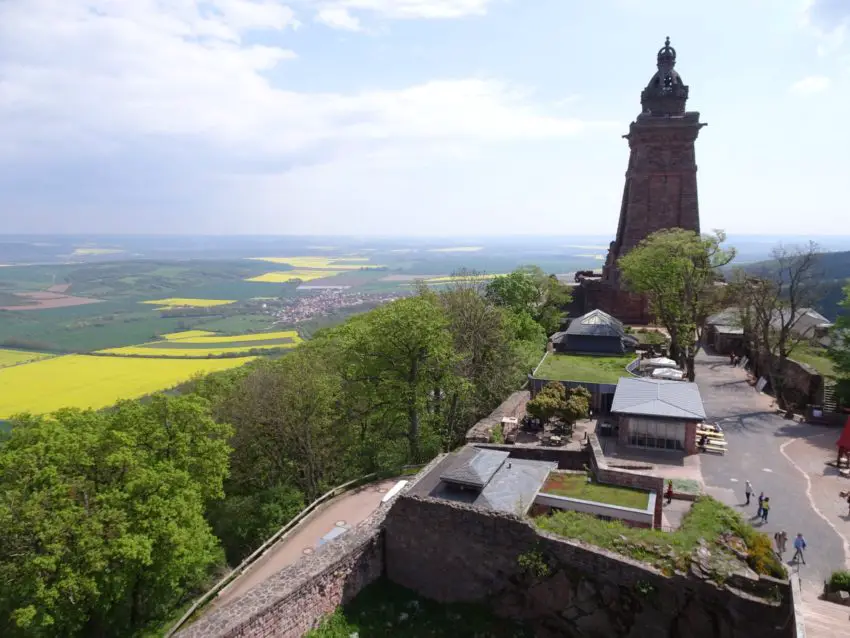Occasionally also known as Barbarossa Monument, the huge Kyffhäuser Monument crowns the central German mountain range of the same name and thus is not only a fascinating historical relict but also affords absolutely stunning views of the surrounding landscape.
Standing 81m/265 ft. tall, it’s Germany’s third tallest monument after the Monument of the Battle of Nations in Leipzig and the Monument for Wilhelm I. at the Porta Westfalica in North Rhine-Westphalia (all built under the participation of prolific architect Bruno Schmitz).
Stefanie and I recently decided to check it out again, as both of us had last been here when we were children. The fact that everyone else we met while visiting the Monument were Germans, suggests that it hasn’t really made its way to the radar of international travelers yet, so despite its size it seems to be one of the country’s better-kept secrets.
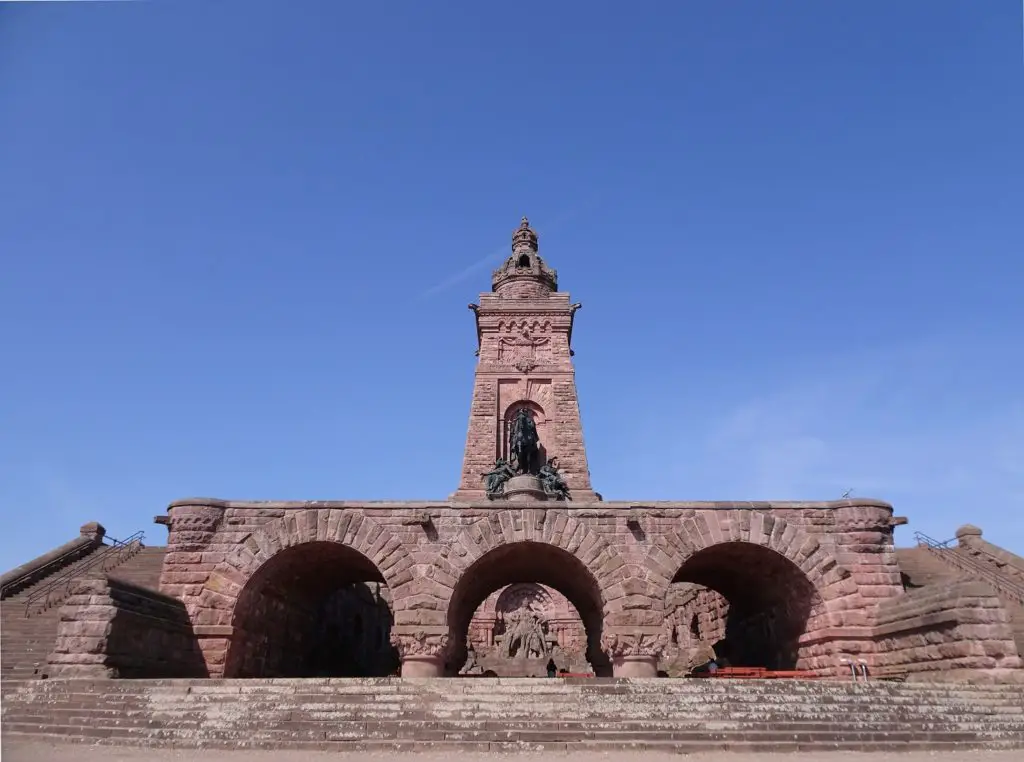
Check out this guide for everything you need to know about visiting Germany’s 3rd-largest Monument.
This post may contain affiliate links and I might earn a small commission at no additional cost to you. For more info click here.
What Does the Kyffhäuser Monument Represent?
Considering the German Empire’s Obsession with humongous monuments you might be forgiven for thinking that they didn’t need any particular reasons to plant one into the landscape. You wouldn’t be that far off as national pride was certainly the driving force behind the erection of the Kyffhäuser-Monument and the historical connection is specious at best.
Finished in 1894, it was conceived as a memorial to the late Emperor Wilhelm I., who died 6 years earlier. Old Willy liked to trace his heritage back to Friedrich I. (also known as Barbarossa for his bushy red beard), the important 12th century Emperor of the Holy Roman Empire.
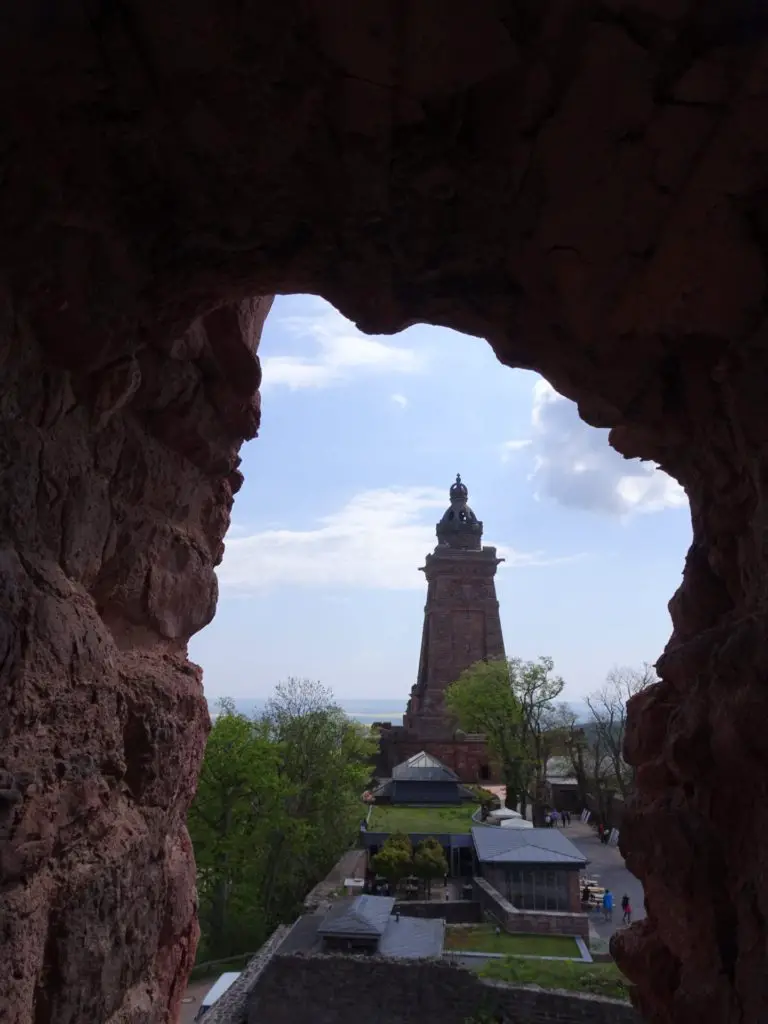
Thus the monument was meant to serve as a legitimization of the German Empire as a rightful descendant to the Holy Roman Empire, which existed from the 10th to the 19th century. That cause was further underscored by the location of the Monument in the ruins of the former Kyffhausen Castle (Ger. Reichsburg Kyffhausen), a huge medieval castle belonging to Friedrich’s dynasty of Hohenstaufen.
The remains of said castle can be explored together with the monument, giving you an interesting chance to experience the vestiges of two very different phases of German history at the same time.
The Imagery of the Monument
The symbolism of the monument certainly screams national pride at you with all its might. Like with many German monuments of that time the ornamentation is full of overblown, yet ultimately somewhat empty pathos. The equestrian statue about halfway up the front of the tower is Wilhelm I., who is framed on both sides by personifications of perceived German values.
The female figure on the left holding a notepad and pencil is supposed to represent historiography, while the male statue to the right is a Germanic warrior topped with a winged helmet meant to symbolize the fighting spirit of the people.
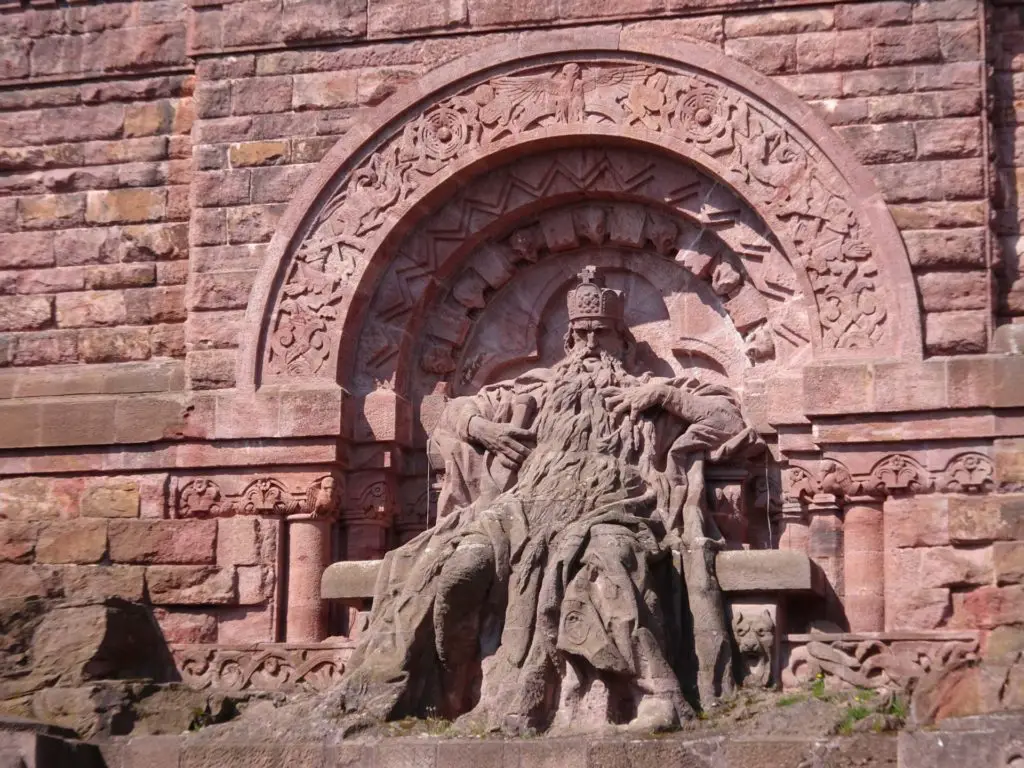
The real star of the show sits slightly below – this is Friedrich I., the 12th century emperor mentioned above, and he’s wearing a wonderfully grumpy just-got-out-of-bed-look. This is not a lapse of the sculptors but a nod to a popular German legend, alleging that the emperor is far from dead, but merely asleep in the Kyffhäuser Mountain, bound to awake when the German people need him.
There are countless other details strewn over the façade of the tower – look out for the stylized snakes slithering around the corners, amongst others.
What to See at the Kyffhäuser Monument and Kyffhausen Castle
The Monument Tower
The monument itself is the first thing you’ll see when entering the complex. In fact, you will probably have seen it plenty of times during your approach, given its size and prominent location on the 450m/1500ft. mountain spur. The ornamented front facade can best be admired from below the arches to the east of the Barbarossa Courtyard.
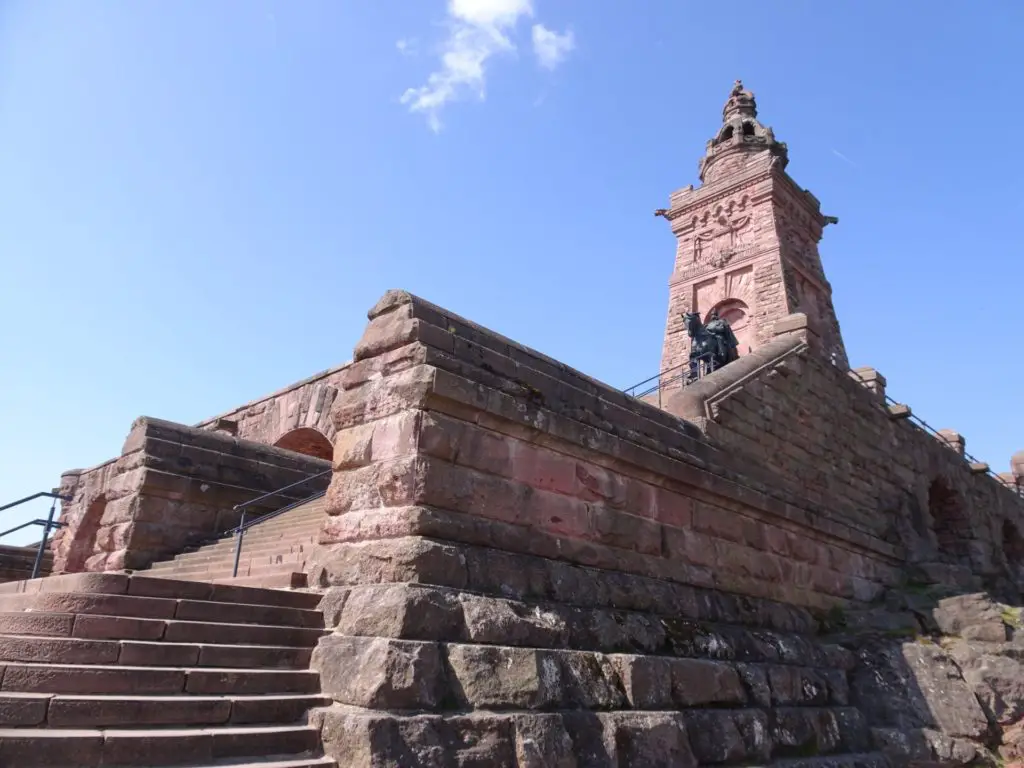
If you walk around the tower to the back, you can enter at its western base to check out a small exhibition displaying objects recovered from the nearby castle well. You can also climb the 236 steps to the top of the tower for some truly amazing views of the surrounding countryside.
The Remains of the Upper Castle
The area behind the tower is the best-preserved, or rather best-reconstructed area of the castle. The most impressive feature here is the Barbarossa-Tower, the remains of the former keep of the upper castle. Note the unusually prominent building blocks that seem to bulge out from the walls – this is a typical architectural feature of the Staufer Dynasty (11th to 13th century).
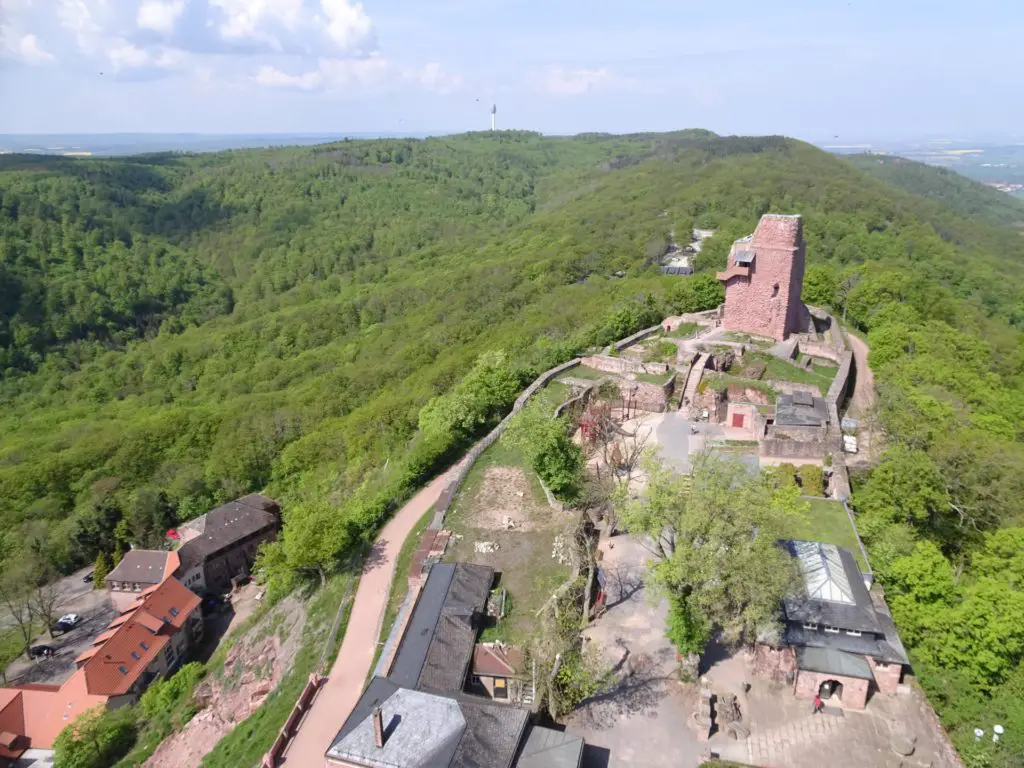
The façade of the monument itself emulates these details. The hole about halfway up the western façade of the tower used to be a toilet – talk about a loo with a view! Inside are some information signs detailing the history of the castle and its time, though most of it is in German only. Still, the views from the tower to the monument are well-worth the short climb up the exterior stairs.
In between the tower and the monument are a few remaining walls as well as a reconstructed chamber gate on the southern side of the compound. There’s also a small museum featuring some artefacts retrieved from excavations in the area and a diorama depicting the castle during its most important period. Directly to the east is another star attraction of the compound – the 176m/577ft. deep castle well, the deepest of its kind in Germany.
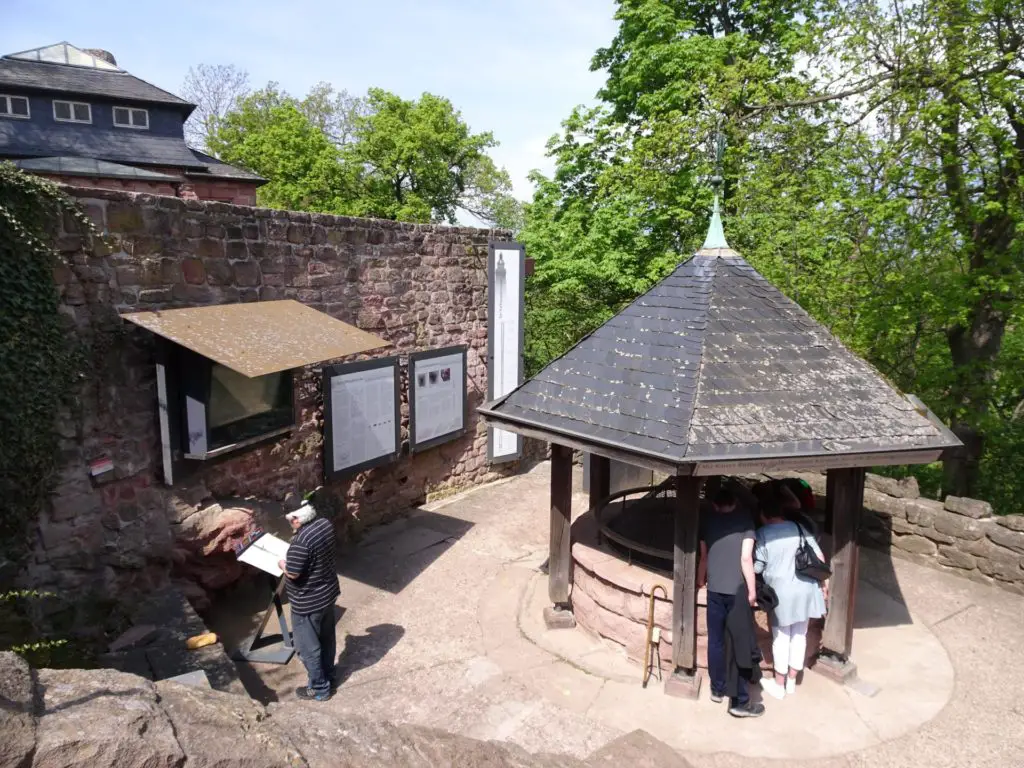
There’s a vending machine where you can buy “Barbarossa’s Gallstones” for a Euro to drop into the well and wait for that distant splash. Interestingly, signs at the well inform you that you’re not allowed to throw in any other rocks because they would “destroy the machinery”, although I firmly believe that the only machinery it would destroy is of the money-making variety;-)
The Lower Castle Ruins
The Lower Castle ruins are situated to the east of the Upper Castle and Monument and can be visited for free. Here you’ll find the remains of a round keep, a chapel as well as the foundations of some living quarters. One the way here, you’ll pass the Middle Castle, which was used as a quarry after the castle was abandoned.
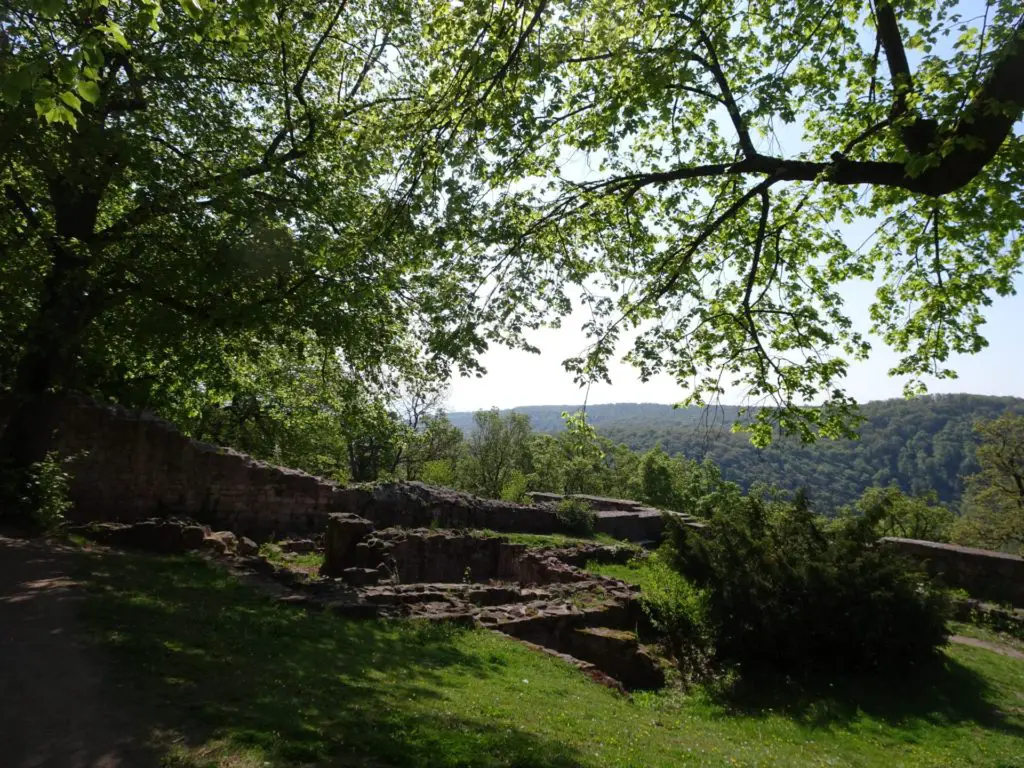
The modest remains of architectural features in between the quarry walls make for an interesting sight. Directly to the north of the Lower Castle, there’s a viewpoint called Novalis’ View affording splendid vistas over the Goldene Aue Valley and to the Harz Mountains in the North. The name is derived from Novalis, a popular 18th century Romantic German Poet.
How to Get to the Kyffhäuser Monument
The monument can best be reached from the nearby cities of Sangerhausen to the north-east or Bad Frankenhausen to the south. The somewhat infrequent bus connection means that your own set of wheels really comes in handy here. At the time of writing, bus VGS-494 from Bad Frankenhausen goes directly to the monument four times a day from April to October. You can check the connections here.
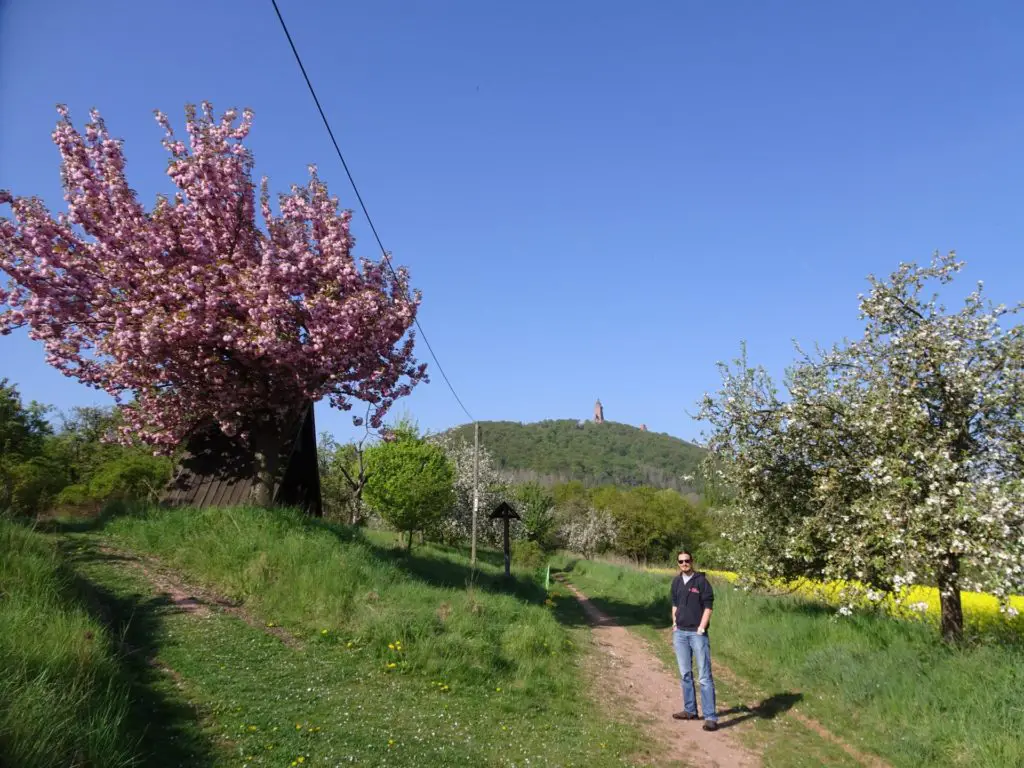
From Sangerhausen, it’s best to take bus VGS-453 to Tilleda from where you can hike up to the monument. Note that the bus goes regularly from Monday to Friday, but has only one connection each way on Saturday and Sunday. Again, you can check the current connection here.
Starting from Tilleda gives you the chance to visit the fascinating reconstructed royal medieval palace “Königspfalz Tilleda” before or after your trip to the monument. The hike from Tilleda to the monument takes about an hour and the first part leads through a pretty stretch of apple orchards, which is especially beautiful in the springtime. If you’re not averse to a bit of hiking, this is the ideal way to go in my opinion.
Map of the Kyffhäuser Area
Here’s a map of the monument and surrounding cities to give you a general idea. Also included are some possible hotels and guest houses in the surrounding area.
How Much Does it Cost to Visit the Kyffhäuser Monument?
The entrance is 7,50€, including the monument, the remains of the medieval castle and the small museum. The entrance to the small lower castle area is free.
Where to Stay Near the Kyffhäuser Monument
Almost everyone who visits the Monument does so on a day trip from one of the surrounding towns. Sangerhausen and Bad Frankenhausen are the most convenient bases and both feature a number of sights as well as plenty of hotels and restaurants to make for a pleasant stay.
We stayed at the Pension Rüsselpub in Sangerhausen, which is a bit out of the centre of town, but good value plus the adjacent Pub is a great place for a drink or two in the evening. There are a couple of other cheapish guest-houses in town, such as Pension Rosengarten, as well as some mid-range options like Hotel-Pension am Rosarium.
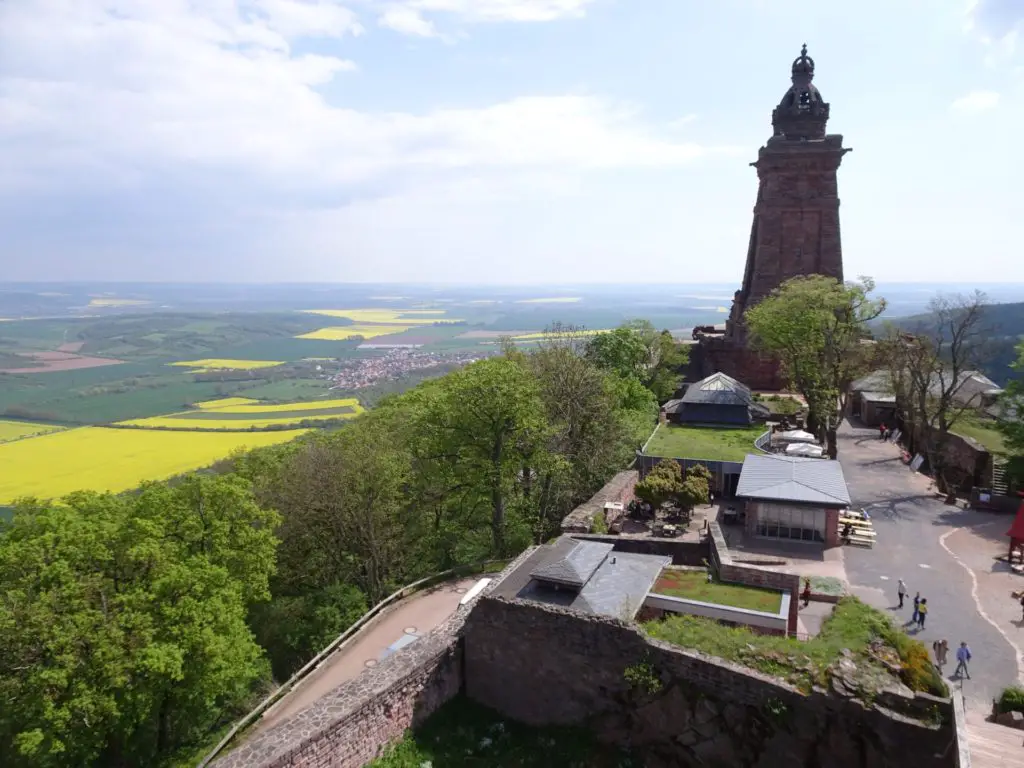
If you prefer to stay close to the monument itself, the midrange hotel Burghof Kyffhäuser would be an option. You can check for more options in the area map above.
Where to Eat Near the Kyffhäuser Monument
There is a small café serving drinks and snacks inside the castle area (which means that you have to pay the entrance fee to get there) and another one on the road leading to the monument, a couple of hundred meters west of the compound. If you need something more substantial, there’s a restaurant joined to the Burghof Kyffhäuser Hotel directly south of the castle area.
See Also
The Monument to the Battle of the Nations in Leipzig, another impressive Monument from the same era
Exploring the Medieval Royal Palace in nearby Tilleda
